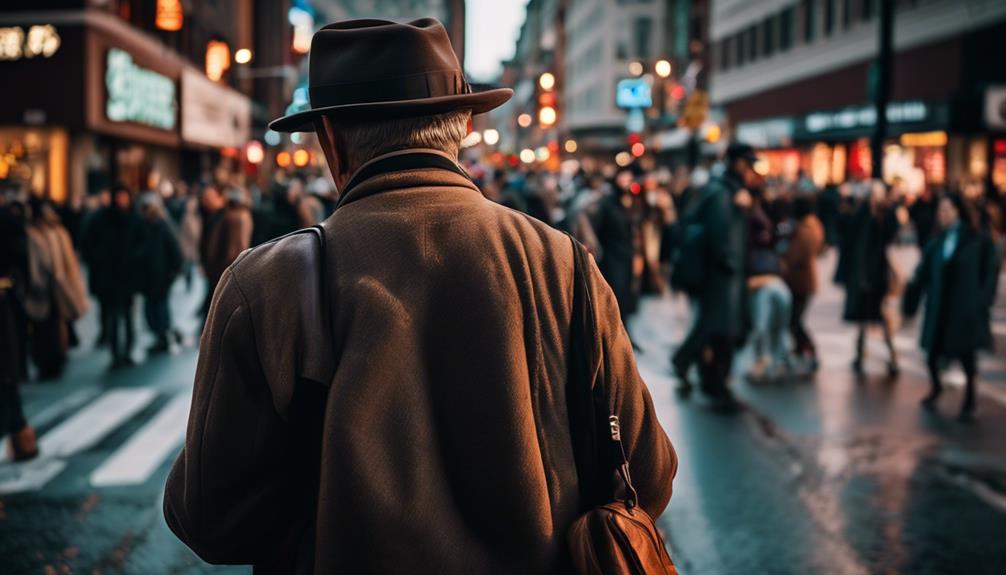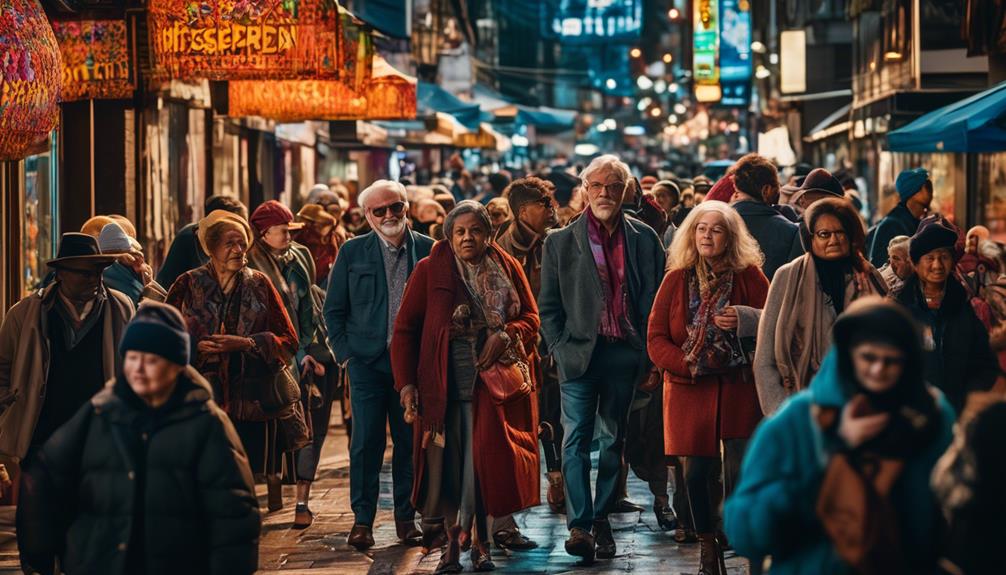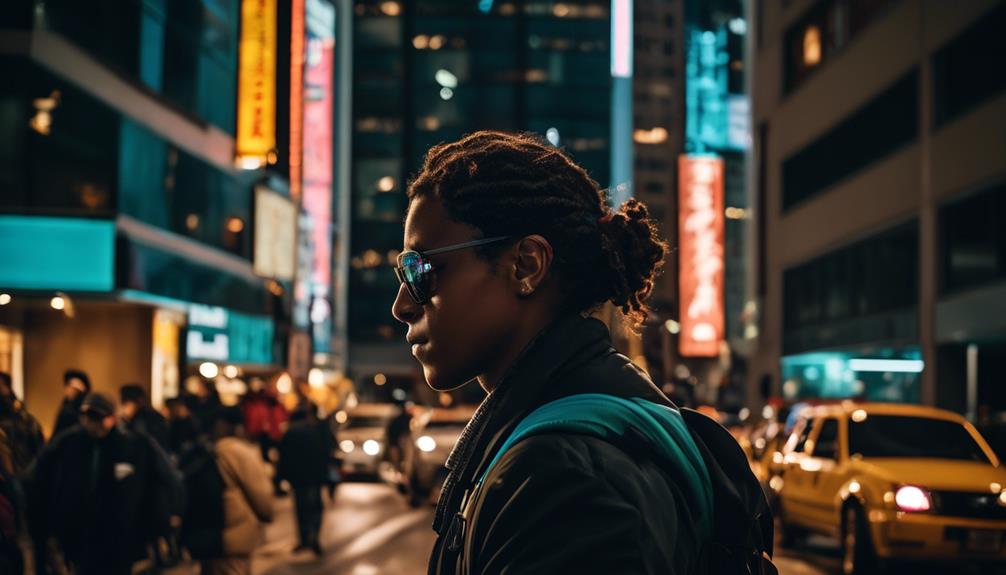Please note this post may contain affiliate links picked by me (Jay) that I have deemed may be of interest or relevant to you the reader of this.
These links do not affect the cost of the thing if you decide to purchase but i may get a little money if you choose to purchase.
For more information on my affiliate link policy click here.
Embarking on a journey through the ethical landscape of street photography is akin to navigating a complex maze of social nuances and moral dilemmas.
As photographers, we find ourselves constantly drawn to the vibrant tapestry of everyday life, eager to capture fleeting moments that tell compelling stories. However, in our pursuit of art and documentation, it is essential to tread carefully, considering the ethical implications of our actions.
In this guide, I will explore the intricacies of navigating the ethical boundaries of street photography, offering insights and practical advice for both aspiring and experienced photographers alike.
But how can we strike a delicate balance between artistic expression and social responsibility? Join me as we delve into this thought-provoking topic together.
Key Takeaways
- In street photography, it is essential to prioritize the privacy of individuals and obtain their informed consent when capturing them in intimate or vulnerable situations.
- Cultural sensitivity is crucial to avoid perpetuating stereotypes and to actively engage with the communities being photographed.
- Respecting personal space and boundaries, as well as blending into the environment for candid moments, helps to document without intrusion or harm.
- Balancing artistic expression with social responsibility involves considering the impact of our work on subjects and communities, challenging perceptions, and ongoing dialogue to accurately represent experiences.
Understanding Ethical Considerations
Understanding ethical considerations is essential for street photographers to navigate the complex landscape of capturing candid moments in public spaces. As a street photographer myself, I've encountered numerous ethical dilemmas and have come to realize the importance of cultural sensitivity in this art form.
One of the primary ethical dilemmas faced by street photographers is the invasion of privacy. Candid photography often involves capturing people in their natural state, but it's crucial to respect their personal boundaries. It's essential to obtain consent when capturing individuals in intimate or vulnerable situations. This not only ensures ethical practices but also fosters a sense of trust between the photographer and the subjects.
Cultural sensitivity is another vital aspect of street photography ethics. Public spaces are diverse and multicultural, and it's crucial to be mindful of cultural norms and practices. What might be acceptable in one culture may be offensive or intrusive in another. By understanding the cultural context, street photographers can capture authentic and respectful images that celebrate diversity rather than perpetuate stereotypes.
To navigate these ethical considerations successfully, street photographers must develop a deep understanding of the communities they photograph. This involves actively engaging with the people and places they capture, listening to their stories, and respecting their perspectives. By building relationships based on trust and mutual respect, photographers can create powerful images that preserve the essence of a community while respecting individual rights.
Respecting Subjects' Privacy and Consent
Having a deep respect for the privacy and consent of subjects is paramount in street photography, as it ensures ethical practices and fosters a sense of trust between the photographer and those being captured. Informed consent is a crucial aspect of respecting subjects' privacy and maintaining ethical standards in street photography. As photographers, it's our responsibility to inform individuals about our intent to capture their image and obtain their consent before doing so.
In the realm of street photography, candid photography is often celebrated for its ability to capture authentic moments. However, it's important to remember that even in candid situations, subjects have a right to privacy and consent. While it may not always be possible to obtain explicit consent in every situation, photographers can still demonstrate respect by being mindful of their subjects' boundaries and privacy.
One way to navigate this ethical dilemma is by being transparent and open about our intentions as photographers. By explaining our purpose and showing genuine interest in the people we photograph, we can establish a level of trust that allows subjects to feel more comfortable being captured candidly. This approach not only respects their privacy but also acknowledges their agency in the photographic process.
Furthermore, it's essential to consider the context and cultural norms of the location where we're photographing. Different societies have varying expectations regarding privacy, and as photographers, we must be sensitive to these cultural nuances. Respecting subjects' privacy and obtaining their informed consent is crucial, even if it means refraining from capturing certain moments or seeking alternative ways to convey our artistic vision.
Documenting Without Intrusion or Harm
To document without intrusion or harm, it's crucial to approach street photography with empathy, sensitivity, and a deep understanding of the impact our presence may have on the subjects we capture. Establishing boundaries becomes paramount in ensuring that we respect the personal space and privacy of those we photograph. It's important to remember that the streets are public spaces, but that doesn't give us the right to invade someone's personal bubble without their consent.
When capturing candid moments, it's essential to be discreet and unobtrusive. It's crucial to blend into the environment, becoming a part of the scene rather than a disruptive presence. By doing so, we can capture authentic moments without altering the natural flow of events or causing discomfort to our subjects.
Empathy plays a significant role in documenting without harm. Putting ourselves in the shoes of the people we photograph allows us to understand their emotions and perspectives. This understanding helps us approach them with respect and sensitivity, ensuring that our actions don't cause any harm or distress.
Furthermore, it's important to be knowledgeable about the cultural, social, and ethical implications of street photography in different contexts. This knowledge allows us to make informed decisions about what and how we photograph, minimizing the potential for harm or offense.
Balancing Artistic Expression and Social Responsibility
As street photographers, we must navigate the delicate balance between expressing our artistic vision and fulfilling our social responsibility. Ethics in street photography require us to consider the impact of our work on the subjects we document and the communities we represent.
The power of visual storytelling lies in its ability to evoke emotions, challenge perceptions, and spark conversations. It's through our art that we've the opportunity to shed light on important social issues and create awareness.
However, as artists, we must be mindful of our responsibility to our subjects. It's essential to approach street photography with respect, empathy, and consent. We should always seek consent when possible, especially when photographing vulnerable individuals or sensitive situations. This ensures that we aren't exploiting their experiences for our own gain, but rather, amplifying their voices and stories.
Additionally, it's crucial to consider the potential consequences of our work. While our intentions may be pure, the way our images are interpreted and used can have lasting effects. Therefore, we must be mindful of the context in which our photographs are presented and the narratives they may perpetuate.
To strike a balance between artistic expression and social responsibility, we can engage in ongoing dialogue with the communities we photograph. By involving them in the process, we can ensure that our work accurately reflects their experiences and challenges harmful stereotypes.
Developing a Personal Code of Ethics
Developing a personal code of ethics is an essential step for street photographers to navigate the complexities of their craft and ensure their work aligns with their values. As street photographers, we often find ourselves facing ethical dilemmas and challenging situations that require careful consideration. To help guide us in making ethical decisions and maintaining cultural sensitivity, here are three key points to consider:
- Respect for Privacy: Street photography involves capturing candid moments in public spaces, but it's important to respect the privacy and autonomy of individuals. Ask yourself whether the subject would feel comfortable being photographed and consider obtaining their consent whenever possible. Be mindful of photographing vulnerable individuals or those in sensitive situations, and always prioritize their well-being over capturing the perfect shot.
- Cultural Sensitivity: Street photography is a global practice, and as photographers, we must be mindful of the diverse cultures and communities we encounter. Take the time to learn about the local customs, traditions, and sensitivities of the places you're photographing. Respect cultural boundaries and avoid perpetuating stereotypes or exploiting marginalized communities. Use your work to celebrate diversity and challenge societal biases.
- Ethical Editing and Usage: The way we edit and present our photographs can greatly impact their ethical implications. Be transparent about any editing techniques used, ensuring that your images accurately represent the scene you witnessed. Additionally, consider the intended purpose and audience of your work. Will it be used for commercial gain, journalism, or personal expression? Ensure that your intentions align with your ethical values and that your work doesn't cause harm or perpetuate injustice.
Frequently Asked Questions
How Can I Ensure That My Street Photography Does Not Invade Someone's Privacy, Even if I Have Obtained Their Consent?
To ensure that my street photography respects boundaries and privacy concerns, even with consent, I must prioritize the well-being and comfort of the subject. It's important to remember that consent doesn't automatically grant permission to invade someone's privacy.
I need to be mindful of the context and surroundings, considering whether my presence or actions may cause discomfort or compromise someone's privacy. By being empathetic and aware, I can navigate the ethics of street photography while still capturing innovative and compelling images.
Should I Always Ask for Permission Before Taking Someone's Photograph on the Street?
Should I always ask for permission before taking someone's photograph on the street? It's a question that sparks a debate among photographers.
While obtaining consent may seem like the ethical thing to do, it's important to consider the legal implications and cultural differences. Laws regarding street photography vary from country to country, and some cultures may value privacy more than others.
Ultimately, it's about striking a balance between respecting others' rights and capturing the essence of life in the streets.
Is It Okay to Use Street Photography for Commercial Purposes Without the Subject's Knowledge or Consent?
In my opinion, using street photography for commercial purposes without the subject's knowledge or consent raises serious ethical concerns and legal implications.
It's important to respect people's privacy and rights, even in public spaces. By obtaining permission and engaging in open dialogue, we can foster trust and collaboration between photographers and subjects.
Additionally, considering the impact of our actions on individuals and communities can lead to innovative approaches that prioritize consent and respect.
What Should I Do if Someone Confronts Me About Taking Their Photograph in Public?
When someone confronts me about taking their photograph in public, it's important to handle the situation with respect and empathy. Diffusing tense situations in public photography requires a calm and understanding approach.
I find that engaging in a conversation, explaining my intentions, and seeking their perspective can often lead to a mutual understanding. Additionally, offering to delete the photo or respecting their wishes can help resolve the situation amicably.
It's crucial to prioritize the comfort and consent of the subjects in street photography.
How Can I Strike a Balance Between Capturing Authentic Moments and Avoiding Exploiting Vulnerable Individuals in My Street Photography?
When it comes to street photography, I believe it's crucial to strike a balance between capturing authentic moments and respecting the boundaries of the individuals we photograph.
It's important to remember that ethics play a significant role in candid photography. By being mindful of the vulnerability of certain individuals, we can ensure that we aren't exploiting or disrespecting them in any way.
This approach allows us to create powerful and meaningful images while maintaining the integrity of our subjects.
Conclusion
In the realm of street photography, ethics guide our every step. We must respect the privacy and consent of our subjects, capturing their stories without intrusion or harm. It's a delicate balance, merging artistic expression and social responsibility.
As we navigate this complex landscape, it's crucial to develop our own personal code of ethics, ensuring that our work remains thoughtful, insightful, and knowledgeable.
Let our lenses capture the beauty of humanity, while honoring the dignity of all.


